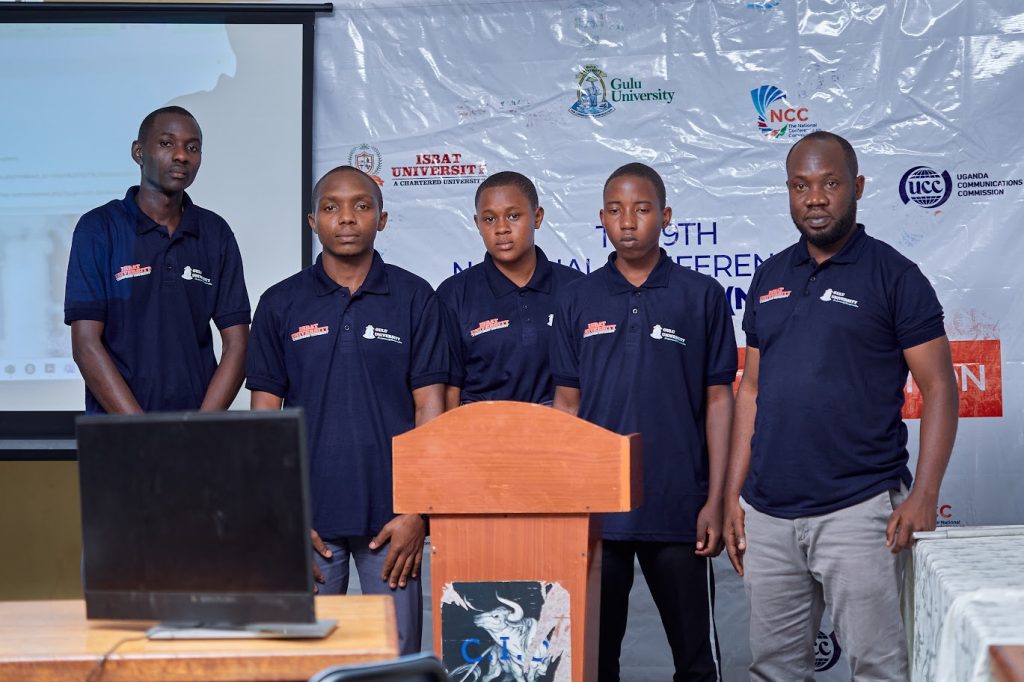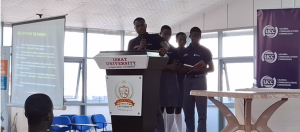Kazo Secondary School Launches a Digital Academic Follow-Up System to Strengthen Parent–Teacher–Learner Engagement

In Kazo District, a group of brilliant young innovators from Kazo Secondary School have developed an extraordinary digital tool aimed at transforming the way schools communicate with parents and monitor learner progress. Their creation, the Kazo Secondary School Management System (KMS), is a web-based academic follow-up platform designed to enhance engagement between teachers, parents, and learners. Through this innovation, Kazo Secondary School is redefining what collaboration in education looks like, ensuring that every learner receives consistent guidance, feedback, and support throughout their academic journey.
For many years, the education system in Uganda has struggled with a communication gap between schools and homes. Parents often discover their child’s poor performance, absenteeism, or behavioral issues only at the end of the term, when report cards are handed out. Teachers, managing large classes and administrative duties, find it nearly impossible to contact every parent individually. As a result, interventions come too late, and many learners fall behind without timely support. Recognizing this persistent challenge, the ICT Club at Kazo Secondary School decided to act, turning a national concern into a technological opportunity. They envisioned a digital bridge that connects all three key stakeholders — the parent, the teacher, and the learner — in one synchronized communication system.
The Kazo Management System was therefore developed as a practical solution to improve communication, transparency, and accountability in schools. Once registered, each parent, teacher, and learner receives a unique username and password to securely log in and access relevant information. The platform provides a personalized dashboard where users can view academic updates, recent announcements, and upcoming deadlines. Through the integrated messaging center, parents can communicate directly with teachers about their child’s progress, while teachers can share assignments, behavioral reports, or exam results instantly. Learners can also log in to access their assignments, check grades, and read comments from teachers — all in real time. The system even includes an automatic notification feature that alerts parents if a child’s performance drops or if they miss school.
Beyond convenience, the innovation is deeply educational in its purpose. The KMS promotes inclusivity and accountability by ensuring that parents are consistently involved in their children’s learning process. It also reduces paperwork for teachers, provides real-time academic tracking, and builds digital literacy skills within the school community. In doing so, the system directly contributes to Sustainable Development Goal 4 — Quality Education — by promoting equitable access to academic information and encouraging collaboration among stakeholders. The result is a transparent, supportive, and digitally connected learning environment where no learner is left behind.
The problem this project addresses is not unique to Kazo; it is a nationwide issue. The current education landscape in Uganda often lacks a structured feedback system that aligns teachers, parents, and learners in the same loop. This leads to fragmented communication and delayed responses to academic challenges. The Kazo ICT Club understood that timely access to information could change this pattern entirely. Their project bridges that gap by enabling parents to follow up on schoolwork continuously rather than waiting for the end of term. Teachers are relieved from repetitive paperwork and can focus on meaningful interactions, while learners benefit from consistent support and motivation. This new level of connectedness helps transform schools from isolated institutions into collaborative communities of learning.
Technologically, the KMS system is impressive. It is web-based, meaning it can be accessed from any device with internet connectivity. It features modules such as an assignment portal, behavior log, messaging center, announcement board, and profile dashboard for each student. The user interface is intuitive and visually appealing, offering both a general dashboard for administrators and a teacher’s dashboard tailored to classroom needs. Screenshots of the system reveal a modern layout that organizes all data clearly, reducing complexity for users. The platform is currently hosted at https://kazosss.ictclubs.ug, allowing stakeholders to explore its functionalities online.
The justification for developing the system is clear and compelling. The ICT Club realized that for education to be effective, parents must be informed and involved in real time. By creating a centralized platform for academic follow-up, they empower parents to participate in their children’s education proactively. This partnership between teachers and families ensures that learning is not just confined to classrooms but continues at home with parental support. The project also demonstrates how digital transformation can be scaled affordably within the Ugandan education context. Its sustainability lies in its low maintenance cost, web-based architecture, and potential for expansion into a premium analytics model that could generate income to keep the platform self-sustaining.
The conclusion of this innovation journey highlights a story of purpose-driven technology. The Kazo Secondary School ICT Club did not just create a software system; they built a solution that strengthens human relationships in education. Their project embodies the spirit of innovation, collaboration, and social impact that Uganda’s ICT Clubs initiative seeks to inspire in schools nationwide. It shows how young learners, when equipped with digital skills, can solve real-world challenges affecting their communities. If adopted widely, the Kazo Management System could revolutionize school communication across Uganda, ensuring that every student’s academic journey is guided by timely feedback, collective accountability, and digital efficiency.
Through mentorship from the Uganda Communications Commission (UCC), ISBAT University, Gulu University, and KAWA Uganda, the students at Kazo Secondary School have proven that innovation begins in the classroom. Their work stands as a model for the country — a demonstration that technology, when applied creatively, can make education more human, inclusive, and effective. The Academic Follow-Up System they created is not merely an application; it is a vision of a connected, data-driven, and compassionate education system that empowers every learner to succeed.






